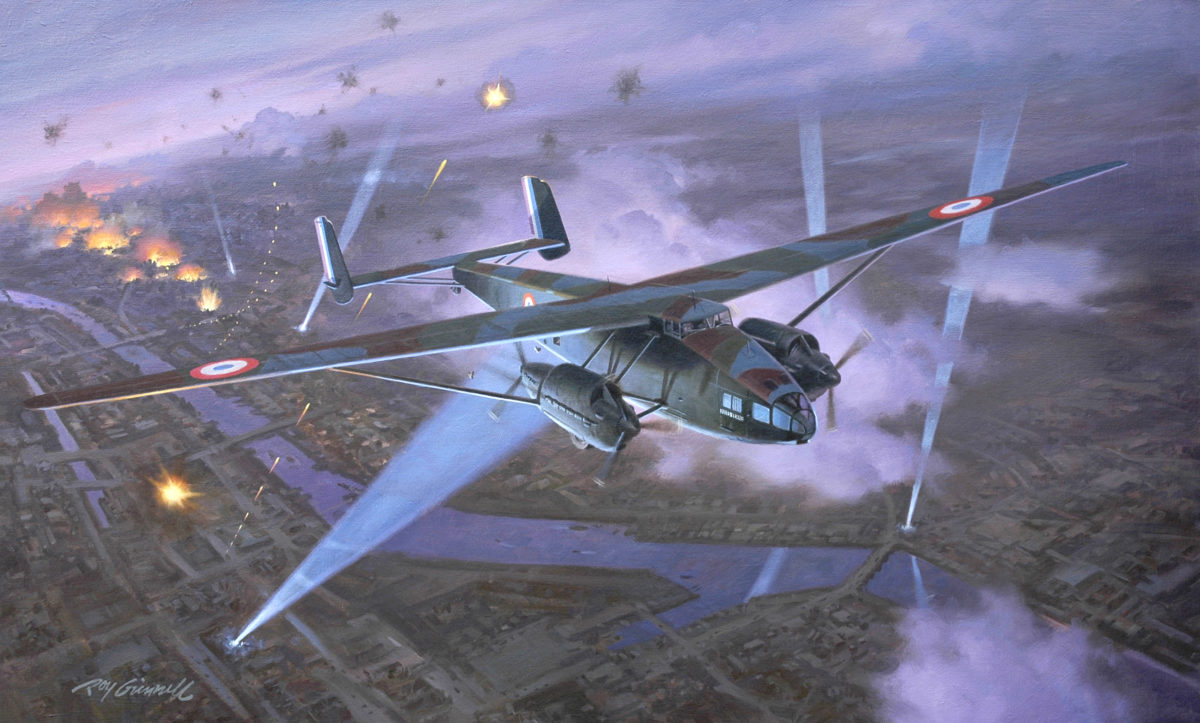The first air raid on the German capital was carried out at night by an antiquated French bomber.
As the French auxiliary bomber Jules Verne approached Berlin at midnight on June 7, 1940, the crew was amazed to see the capital of the Third Reich fully illuminated. The aircraft commander, naval Captain Henri Daillière, instructed pilot Henri Yonnet to act as though they were landing at Berlin’s Tempelhof Airport, but then to overfly the field and head at low altitude in the direction of Tegel. Daillière called out “Attention!” as they drew near the target, the Siemens factory. Dropping bombs at low altitude was dangerous because the plane could be caught in the blasts, but when the bombs were released their luck held. Meanwhile, Corneillet, the flight mechanic, and Deschamps, the bombardier, were busy dropping incendiary bombs. Jules Verne had racks for the demolition bombs but none for the small incendiaries, so they simply opened the passenger door and tossed them out by hand.
The explosions finally brought the German air defenses to life. Sirens screamed, and searchlight beams suddenly stabbed the night sky. Several anti-aircraft guns began uncoordinated firing. Still flying low and at top speed, the bomber headed west toward home. But could Jules Verne’s crew avoid the German air defenses and reach safety in France?
This first air raid on Berlin is a little-known event, even to most Berliners. The German Propaganda Ministry stated the next day that an air raid drill had been held. News of the raid was no doubt suppressed because an air attack on the capital would have embarrassed Adolf Hitler and especially Hermann Göring, the air minister, who had bragged before the war, “If any bombs fall on the Reich I will change my name to Maier.” (Contrary to popular belief, this was not an anti-Semitic slur: Maier is a common German name, especially in Bavaria, and Göring was implying that he would just be a “nobody.”) In France, the news of this dangerous raid may have satisfied the leaders’ desire for revenge, even though symbolic, but it was obscured by the general chaos and confusion resulting from the massive German blitzkrieg that was rapidly overrunning France and the Low Countries.
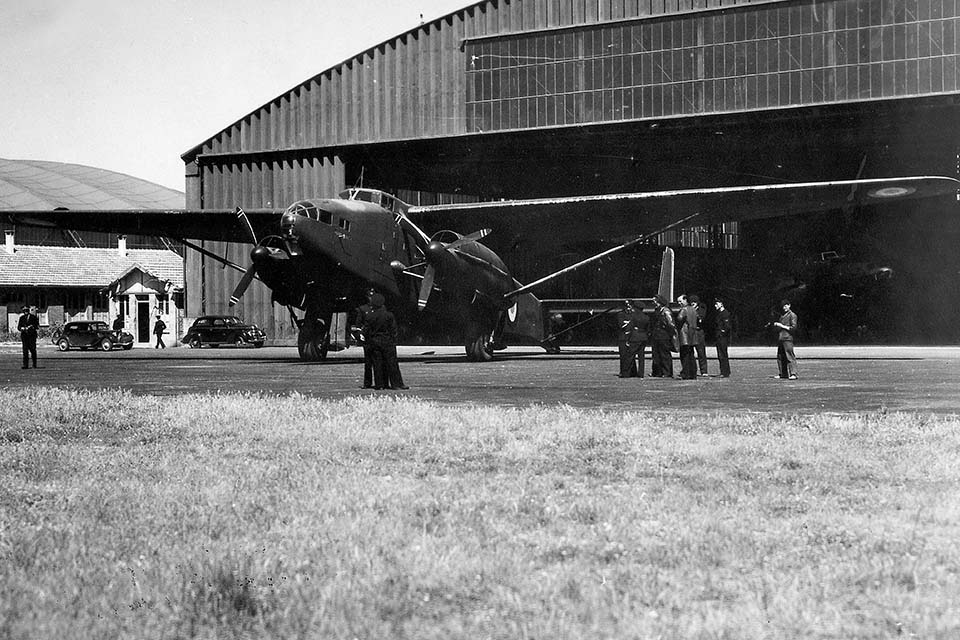
The first real bombing raid on Berlin would not occur until August 25, 1940, during the Battle of Britain. Hitler had placed London off-limits for bombing, and the Luftwaffe was concentrating on defeating the Royal Air Force in preparation for a cross-Channel invasion. But on the night of August 24, a German plane dropped bombs on London, probably by accident, on its way home from a raid. Prime Minister Winston Churchill immediately ordered the RAF to retaliate with a raid on Berlin. That same night, a force of 81 Vickers Wellingtons and Handley Page Hampdens headed for Berlin. Only about half of them reached the capital, which was obscured by dense clouds. Little damage was done, but one bomb killed the only elephant in the Berlin Zoo.
An incensed Hitler ordered Göring to change their air war strategy. Instead of concentrating on neutralizing the RAF, the Luftwaffe now focused on reprisal raids on English cities, especially London. Conducted mainly at night, “the Blitz” failed to break British morale, and in September Hitler was forced to cancel plans for the invasion.
The French air raid on Berlin on June 7 stands as a significant accomplishment that would have been impossible had the French navy not possessed an airplane with remarkably long range. In 1936 the Farman and Hanriot aircraft companies had begun work on a long-range bomber, the F.223. This was a further development of the F.222 bomber, 24 of which were produced for the French air force. The F.223 appeared to be an antiquated design while still on the drawing board, but the Air Ministry ordered a prototype for possible use by Air France, on a planned regular route from Paris to New York, by way of the Azores. The Farman bomber design, with some changes, could fill the requirement for a long-range commercial transport.
The civilian transport, F.223.1, with the registration F-APUZ, began test flights on June 12, 1937. It was an awkward-looking design that remained basically unchanged during the production of nine aircraft. A high-wing monoplane with a long, tapered fuselage, it had a twin-fin tail with external bracing. Two large nacelles mounted below the externally braced wing each housed a pair of tandem-mounted 720-hp Hispano-Suiza 12-cylinder inline engines. The fuel tanks in the fuselage had a capacity of 3,091 gallons, giving the plane an amazing range of almost 5,000 miles. In September 1937, the 10-ton transport participated in the Istres-Damascus-Paris air race, with well-known French pilot Paul Codos at the controls. With a top speed of only about 233 mph, F-APUZ came in last. But in following weeks it set a payload capacity record for a transport of its type.
F.223.1 was named Laurent Guerrero, and Codos and his crew began a new ad – venture on November 20, 1937: a flight from Istres to Santiago, Chile. The trip was completed with great fanfare in two days, 10 hours and 41 minutes. Having proved its ability as a long-range transport, the Farman was approved for use by Air France on mail runs across the North Atlantic. Three planes, with minor modifications, were ordered. Laurent Guerrero served until September 1938 for testing and training.
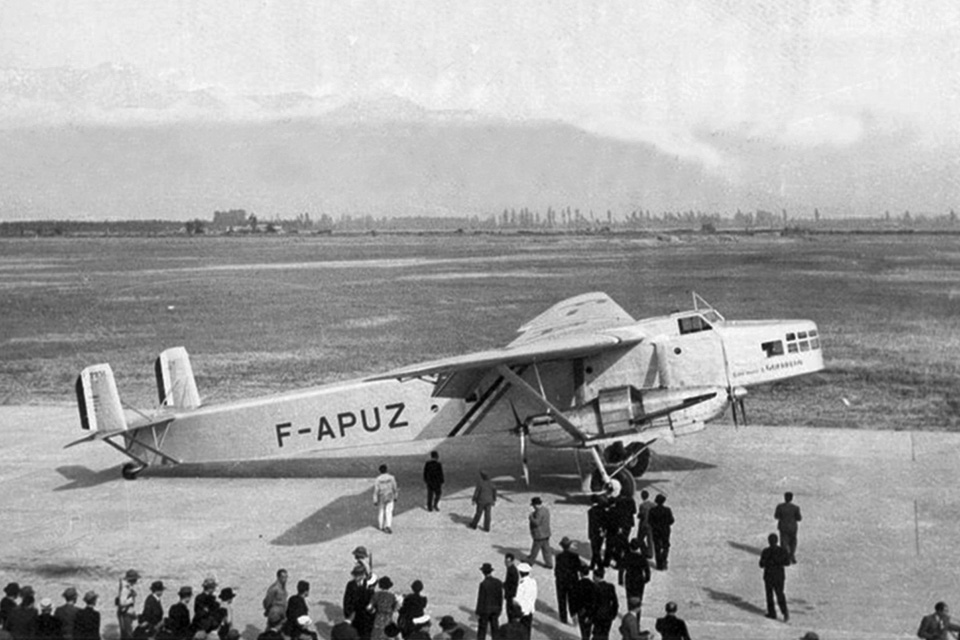
When World War II began in September 1939, F-APUZ was transferred to the French navy for use as a long-range reconnaissance plane. Modifications included the installation of special radio and navigation equipment. On December 10, 1939, still bearing civil markings, it was flown to Dakar in West Africa for use in patrolling the South Atlantic. On its first mission, however, the Farman was damaged in an accident and permanently grounded.
A prototype of a military variant, F.223.01, first flew on January 18, 1938. Though similar to the previous versions, it was powered by four Hispano-Suiza 14 AA 1,100-hp radials. When those power plants proved unsatisfactory, they were replaced with Hispano-Suiza 12Y-29 910-hp inline engines. The plane was given the designation NC.2233 on October 15, 1938. In addition to engine-cooling problems, a landing accident delayed completion of testing until the end of March 1939. France contracted for 15 aircraft of this type, but by May 1940 only nine were delivered, and none saw combat in Europe. On June 16, seven were flown to North Africa for use against the Italians; however, the armistice between France, Germany and Italy on June 22 brought combat to a halt.
The Luftwaffe took over the prototype NC.2233, but the other planes were placed in service with the German-controlled Vichy regime. Five were assigned to a new transport squadron at the beginning of 1941, flying supply missions to French North Africa and the Mideast. By July 1941, two of the Farmans were grounded, and on November 8, 1942, another was destroyed at Rabat, Morocco, in Allied action during the invasion of North Africa.
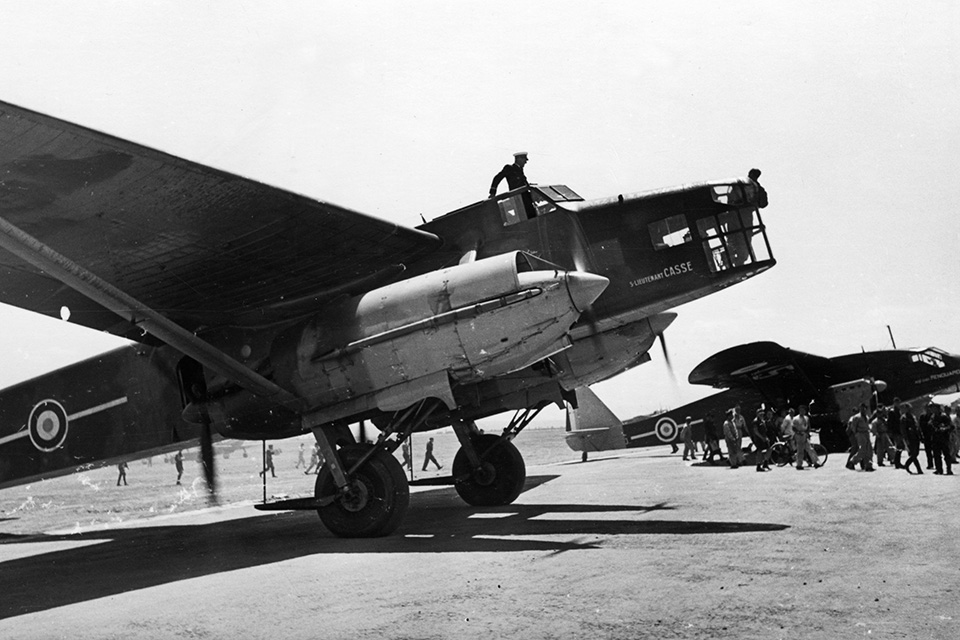
Air France had added four NC.2233s to its fleet after the armistice and used them to carry mail to North Africa. On July 15, 1941, one fell into the hands of the Free French air force, which flew it until the end of the war. When the Germans occupied Vichy France in November 1942, the Luftwaffe took over the remaining three planes from Air France. One was lost in an accident at Toulouse in January 1943, and the others were last known to be at Paris–Le Bourget Airport.
Meanwhile the three F.2230 (later NC.2230) transports ordered for Air France’s transatlantic service were under construction. The first to be completed, registered as F-AQJM, made its maiden flight on April 28, 1938. It was similar to the bomber version, but had been modified for freight hauling by extending and widening the fuselage. Early in 1939, F-AQJM was re-equipped with four Hispano-Suiza 12Y-38/39 920-hp engines. Re-designated NC.2234 no. 01, the modified plane first took to the air on March 15, 1939. The other two aircraft of the same type were completed during that year. The three were given the following names: NC.2234 no. 01, Camille Flammarion; no. 02, Jules Verne; and no. 03, Le Verrier.
The three transports were finishing their testing when World War II began. Camille Flammarion was immediately transferred to the French navy for use in long-range reconnaissance, with Captain Daillière as its commander and technical adviser. On October 10, 1939, it departed Bordeaux for Dakar, then continued on a reconnaissance flight over the South Atlantic. The flight’s official purpose was to establish the commercial air route to South America, but the crew was actually searching for the German pocket battleship Admiral Graf Spee and an auxiliary cruiser, known to be preying on Allied shipping in the area.
After refueling at Rio de Janeiro in mid-October, the Farman had an accident on takeoff, but it was repaired and made the return flight to Paris–Orly Airport on November 13. Camille Flammarion, along with the other two NC.2234s, was then assigned to Naval Squadron B5, with Daillière as commander.
All three NC.2234s required modifications for long-range reconnaissance and bombing. New bomb racks accommodated eight 551-pound demolition bombs. Defensive armament consisted of just one 8mm machine gun on a flexible mount in a dorsal turret behind the wing. The planes were also painted in a camouflage pattern.
On May 10, 1940, the German offensive in the west began with the invasion of France, Belgium and the Netherlands. Jules Verne saw its first action in early April, flying convoy escort duty. Between May 13 and 31, operating from the naval base at Lanvéoc-Poulmic near Brest, it carried out night bombing raids on German targets, mostly in Holland, and one raid on the German city of Aachen. Each flight lasted from eight to 10 hours owing to evasive action. On June 3, Jules Verne accompanied the passenger ship Pasteur, which was carrying part of the French gold reserve to safety, probably in Africa.
That same day, the Luftwaffe bombed Paris for the first time. The French were enraged and demanded revenge. But most of the aircraft in the French air force were obsolete and had already been destroyed by the Luftwaffe. The Germans were flying superior machines, and had honed their skills in combat over Poland and during the Spanish Civil War. The French Air Ministry sent orders to Captain Daillière, who was then at an airfield in Bordeaux with the Farmans, directing him to carry out a bombing raid on Berlin as soon as possible. Although it appeared to be a suicide mission, Daillière quickly developed a plan for a surprise attack that would take advantage of Jules Verne’s only real strength: its exceptional range.
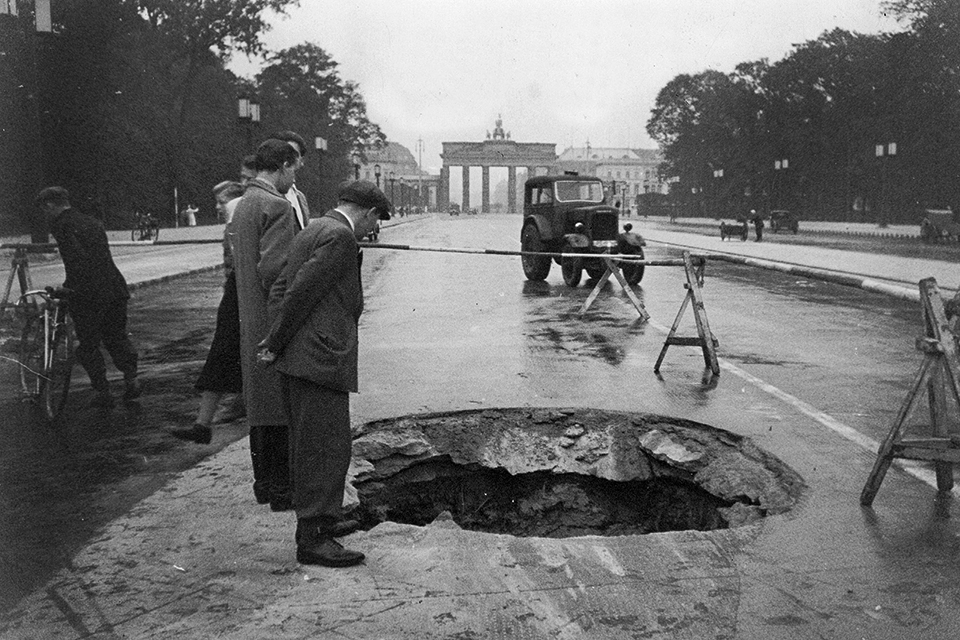
On June 7, the Farman was fueled to capacity and loaded with eight 551-pound bombs and a case of 22-pound incendiaries. Daillière and his crew took off at 15:30 hours, heading north along the Atlantic coast. They turned east, flying along the English Channel and just off the coast of Belgium, Holland and northern Germany. Jules Verne, flying low to avoid detection, then crossed a stretch of the North Sea and flew over southern Denmark, occupied by Germany since April. The bomber cruised over the Baltic Sea and turned south across a lonely stretch of the German coast.
Jules Verne cruised low over the countryside of Mecklenburg as the crew prepared for the navigation challenge of finding their target at night. But as they headed south, they sighted a glow on the horizon: Berlin. Daillière and his crew had expected the capital to have a wartime blackout in force, but much to their surprise it was as brightly lit as in peacetime. The Germans were obviously not expecting an air raid, and certainly not one coming from the direction of the Baltic. Arriving over the eastern suburbs around midnight, Jules Verne simulated a landing approach at Tempelhof Airport in the south ern suburbs, then headed north to Te gel. They reached the Siemens-Werke within minutes, and while Yonnet dropped the bombload on the factory, Corneillet and Des champs heaved a dozen incendiary bombs out the passenger door.
Yonnet banked sharply, dodging uncoordinated flak bursts and searchlight beams. Instead of heading back to the north, they turned south west, flying an irregular course to confuse the air defenses. Jules Verne crossed the French border and passed through the battle zone, landing at Paris Orly at 13:30 on June 8. Daillière and his gallant crew, exhausted but happy, were congratulated by their superiors.
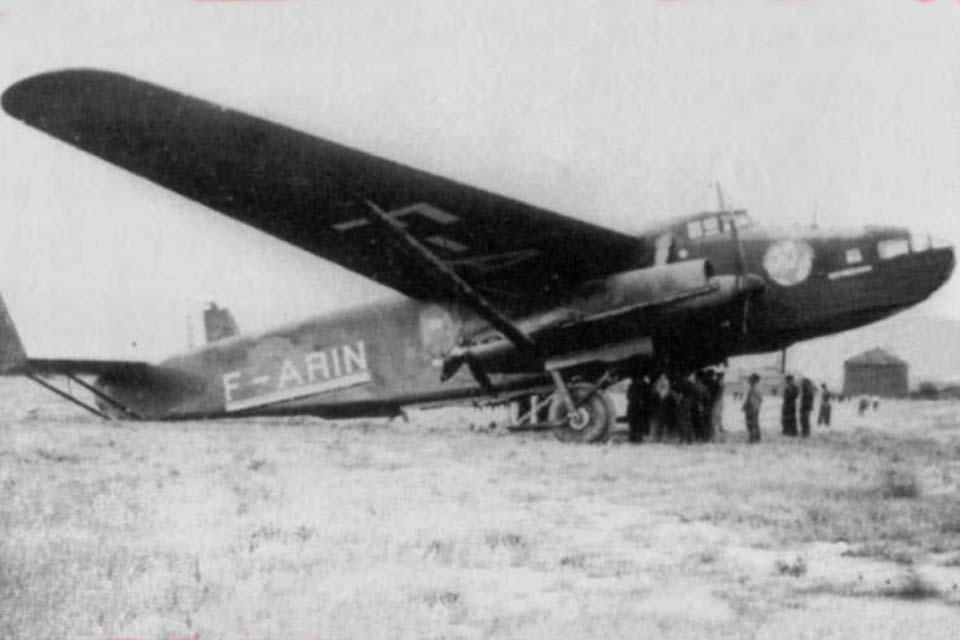
They barely had time to service the airplane and get some sleep before new orders arrived. On the night of June 10-11, they followed practically the same route along the coast, again crossed over southern Den mark and flew out over the Baltic. The target this time was near the coast: the Heinkel factory at Rostock. Again Jules Verne vanished into the night and returned safely. Two days later it bombed an industrial com plex south of Venice, and the next night an oil refinery near Livor no. During both of those missions, the crew dropped propaganda leaflets on Rome.
In the meantime, the British Expeditionary Force managed to evacuate most of its troops from Dunkirk, while the Wehrmacht completed the defeat of the French army. After the armistice on June 22, all three NC.2234s were flown to unoccupied eastern France, and on July 16 they were turned over to Air France. Camille Flammarion was grounded in Bei rut on January 19, 1941, after an accident destroyed its landing gear. Despite the addition of neutral markings, Le Verrier was shot down off Sardinia by Italian fighters on November 27, 1940, on its way to Syria.
With the Allied invasion of North Africa in November 1942, the Germans occupied the remainder of France. Jules Verne met its end on November 8, when French Resistance fighters set it afire to keep it from falling into German hands. The last Farman airplanes of this type ended up in Vichy-controlled Oran, Algeria, and were destroyed during the Anglo-American invasion, bringing an end to this unusual chapter of WWII history.
U.S. Air Force veteran Glen Sweeting is a former curator for the National Air and Space Museum. Further reading: Berlin, by David Clay Large; and French Bombers of World War II in Action, by Alain Pelletier.
Originally published in the January 2015 issue of Aviation History. To subscribe, click here.

